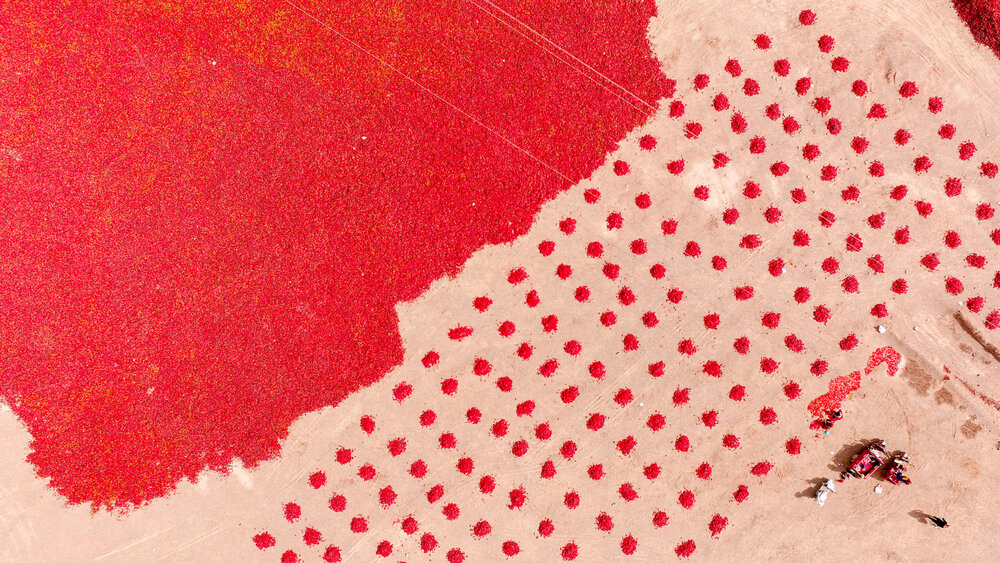In China’s Gobi Desert, autumn tints the khaki-colored land to a flaming scarlet. What you see are not blushed leaves, they are chili peppers! From above, seems like blood cells under a microscope.
Iran (IMNA) - Gobi Desert is a large and brushland region in Asia. This rain shadow desert covers Northern and Northeastern parts of China and Southern Mongolia. Having located near several significant cities along the Silk Road, makes Gobi Desert as a notable location in history.

The word “Gobi” derived from Mongolian language, meaning “waterless”, it is not a sandy desert but a bare rock desert. Each September and October, autumn tints endless fields of Gobi Desert.

The red fields are not autumnal falling leaves, they are chili peppers covered up the desert and spread out to dry in 100-plus degree temperatures. Every year, following the late-summer, one fifth of peppers produced in the world are harvested by farmers across Xinjiang Uyghur Autonomous Region in China.

What the scorching sun in desert natural condition does is the similar circumstances that American farmers and producers try to provide through industrial dehydrators. Red sea of chilies makes the Gobi landscape as an extraordinary land. Following the late-summer harvest, this khaki-colored desert is in red and from above, seems like blood cells under a microscope.
Your Comment